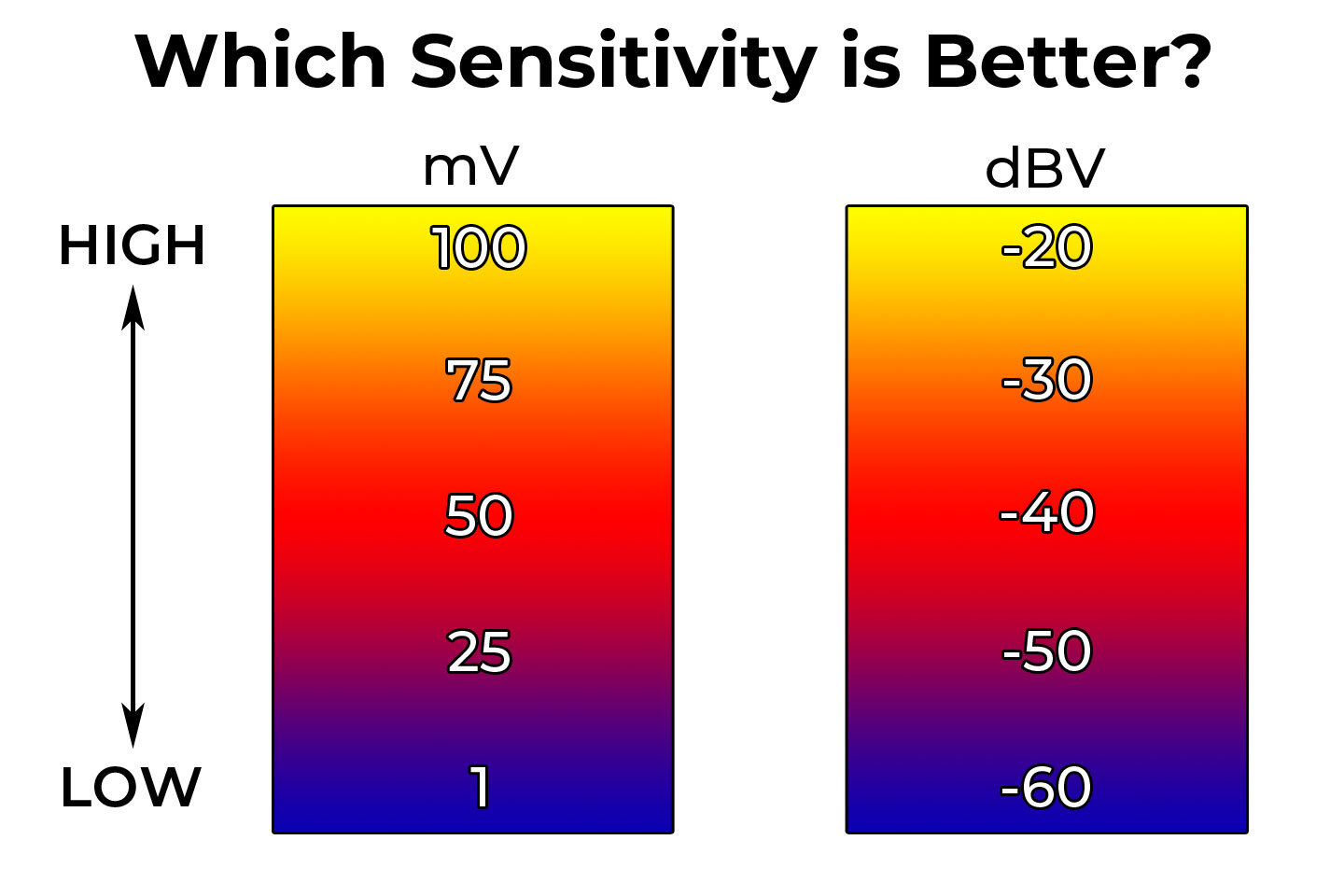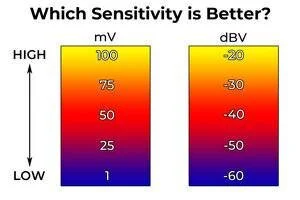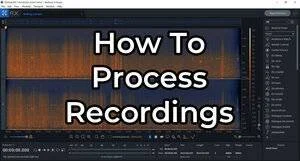Microphone Sensitivity: Which is Better? (Converter and Chart)
Microphone sensitivity specifications can be confusing. Learn how to easily understand dBV/Pa and mV/Pa sensitivities in this article.
I do a lot of microphone comparisons and microphone sensitivity had always been confusing for me. I found myself Googling “Which microphone sensitivity is better?”, “dBV vs mV”, and “Is a negative or positive sensitivity better?”
Most of the search results were filled with complicated terminology and formulas requiring an audio engineering degree to understand. After suffering through many such articles, I finally have the answer.
Which Microphone is More Sensitive?
Measured in dBV:
Given one microphone with a sensitivity of -45dBV, and another microphone with a sensitivity or -36dBV, which is better? ANSWER: The -36dBV microphone is more sensitive.
Measured in mV:
Another scenario using mV: given one microphone with a sensitivity of 10mV, and another with 15mV, which is better? ANSWER: The 15mV microphone is more sensitive.
What is Microphone Sensitivity?
To put it simply, microphone sensitivity measures the amount of output for a given input.
The output of a microphone is what is recorded, and is refereed to as “the signal.”
The more sensitive a microphone is, the louder the signal will be for a given input of sound.
What is a Good Microphone Sensitivity?
The best microphone sensitivity will depend on the recording application. Sometimes a lower sensitivity microphone is better, and other times, a higher sensitivity microphone is better.
Low sensitivity mics are generally better for recording isolated, loud sounds.
High sensitivity mics are generally better for recording ambient, quiet sounds.
Low sensitivity mics are good for:
close miking drums
vocals in a loud environment (live music venue)
guitar and bass amps
high SPL sounds (gunshots, vehicles, etc)
High sensitivity mics are good for:
ambiences
nature sounds
parabolic microphones
voice-over work
How to Convert Between dBV and mV
Microphone sensitivity can be measured two different ways. European manufactures tend to measure using millivolts (mV). American manufactures tend to use decibels relative to one volt (dBV).
This difference in units can be confusing when shopping for new microphone. How do mV compare to dBV? Which one is more sensitive?
In order to accurately compare different units, we need to convert one to the other. Use the below calculators to convert between dBV and mV.
Convert dBV to mV:
Convert mV to dBV:
Final Thoughts
There is a lot more information behind microphone sensitivity and how it is determined, but I’ll spare you the complicated formulas. I wanted this guide to be short and sweet so you can quickly learn what you came for and go on with your day. Cheers!
I hope you’ve gained clarity on microphone sensitivity and can now pick the best mic for your purposes.
Support Acoustic Nature
If you enjoyed this post and would like to help support Acoustic Nature, please consider "buying me a coffee" or becoming a Patreon with the buttons below.
As a thank you for your support, Patreon supporters receive a copy of Field Recording For Beginners, exclusive access to the full Behind The Sounds video series, nature sound library downloads, and more.
If you are unable to support the site financially, please share this post with others, or leave a comment below letting me know you enjoyed this post! Both are free and help the website grow. Thank you ♫
Thanks for reading,
-Jared














